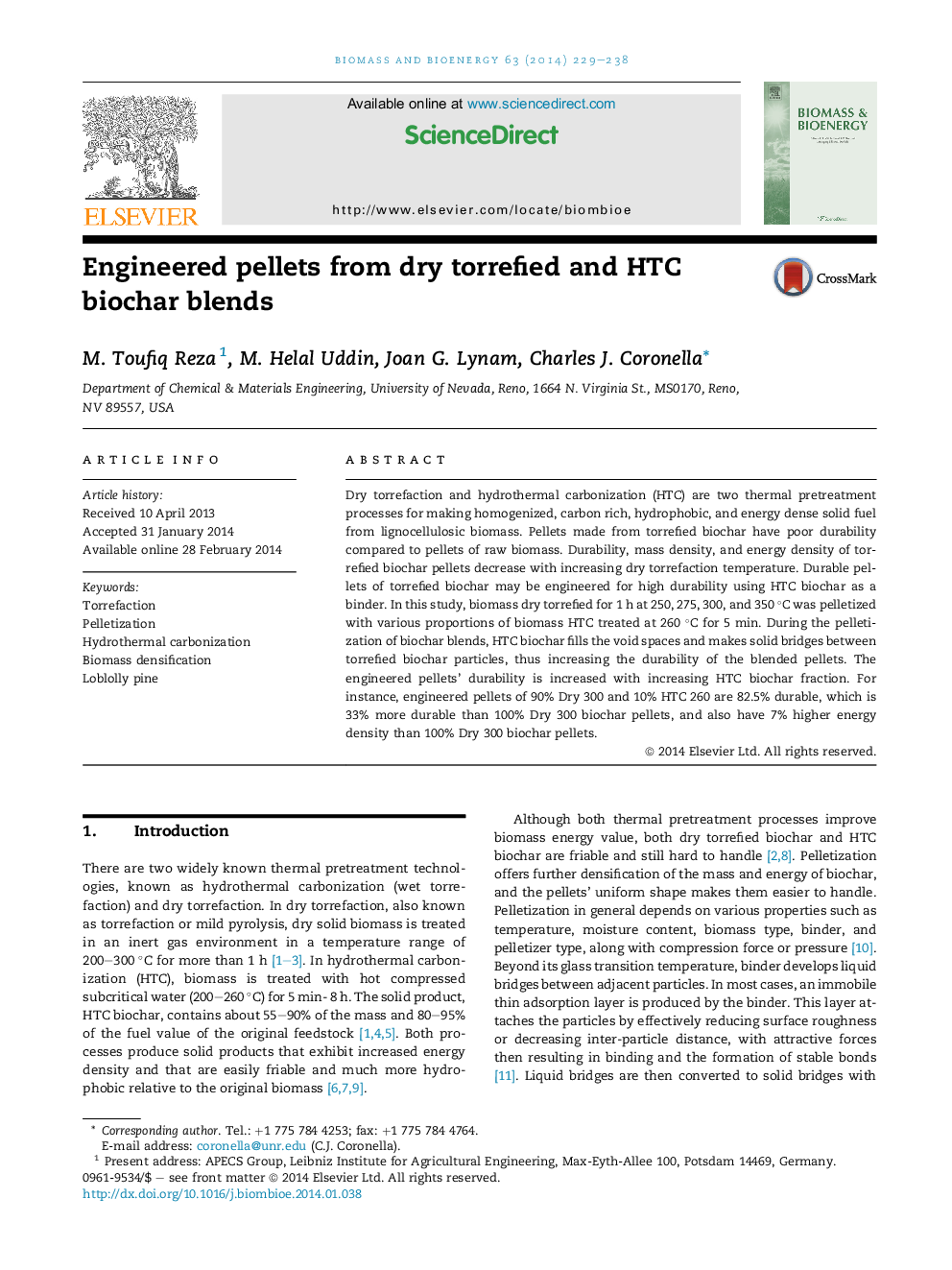| Article ID | Journal | Published Year | Pages | File Type |
|---|---|---|---|---|
| 676929 | Biomass and Bioenergy | 2014 | 10 Pages |
•Dry torrefied biochar pellets made without binder have low durability.•Pellets produced form hydrothermal carbonized biomass have very high durability.•Lignin present in biomass is destroyed through dry torrefaction.•Pellets produced from blends of torrefied biomass and hydrothermal carbonized biomass are suitable durability.
Dry torrefaction and hydrothermal carbonization (HTC) are two thermal pretreatment processes for making homogenized, carbon rich, hydrophobic, and energy dense solid fuel from lignocellulosic biomass. Pellets made from torrefied biochar have poor durability compared to pellets of raw biomass. Durability, mass density, and energy density of torrefied biochar pellets decrease with increasing dry torrefaction temperature. Durable pellets of torrefied biochar may be engineered for high durability using HTC biochar as a binder. In this study, biomass dry torrefied for 1 h at 250, 275, 300, and 350 °C was pelletized with various proportions of biomass HTC treated at 260 °C for 5 min. During the pelletization of biochar blends, HTC biochar fills the void spaces and makes solid bridges between torrefied biochar particles, thus increasing the durability of the blended pellets. The engineered pellets' durability is increased with increasing HTC biochar fraction. For instance, engineered pellets of 90% Dry 300 and 10% HTC 260 are 82.5% durable, which is 33% more durable than 100% Dry 300 biochar pellets, and also have 7% higher energy density than 100% Dry 300 biochar pellets.
